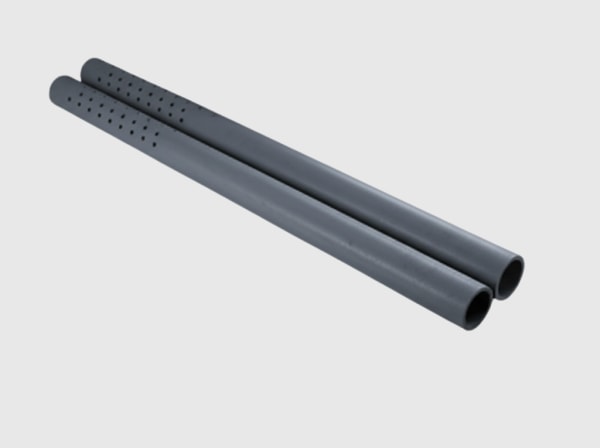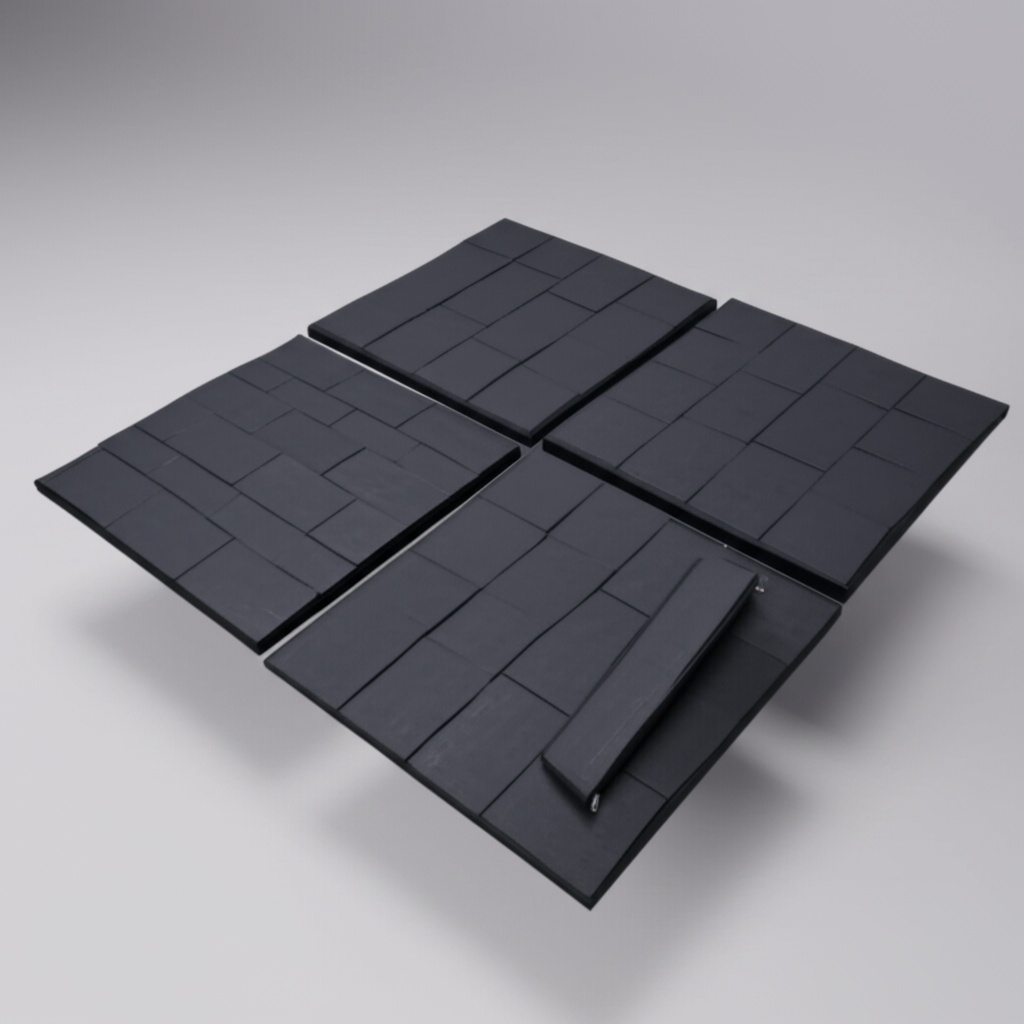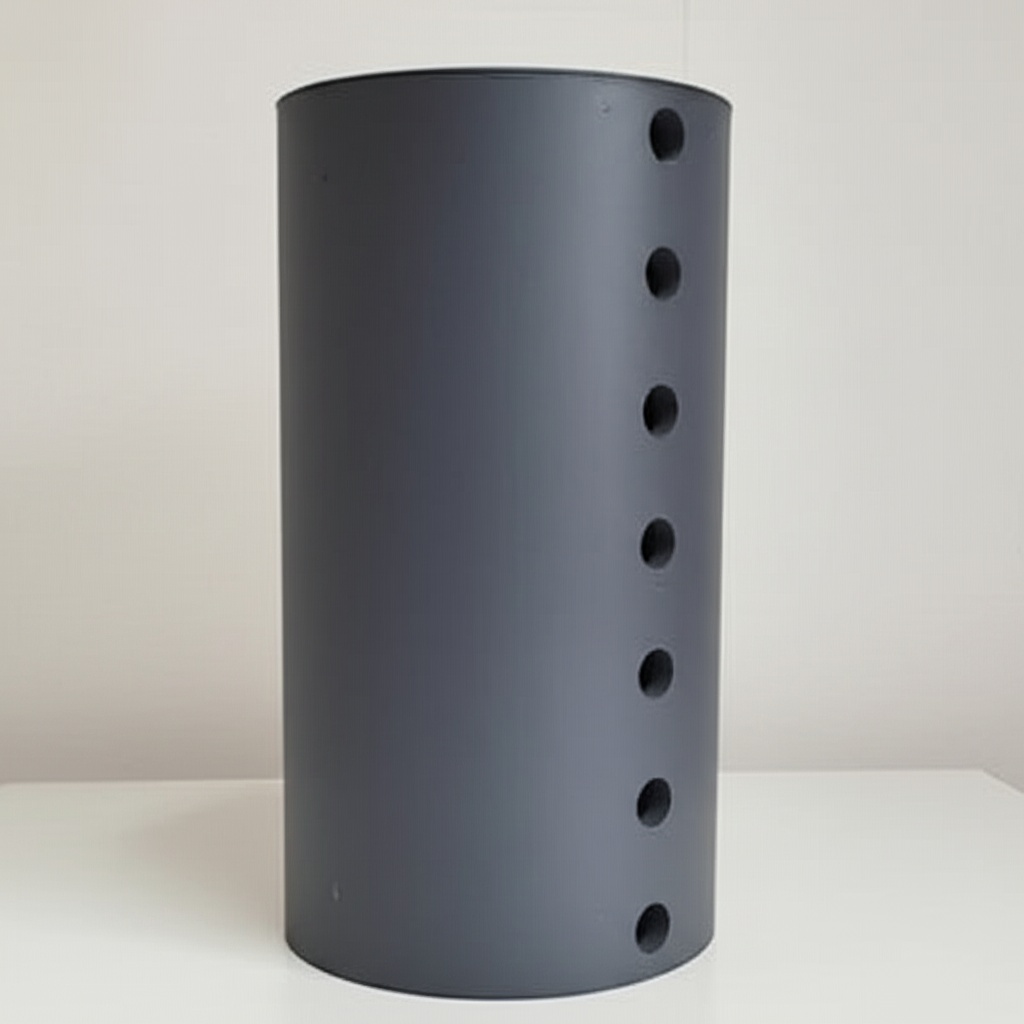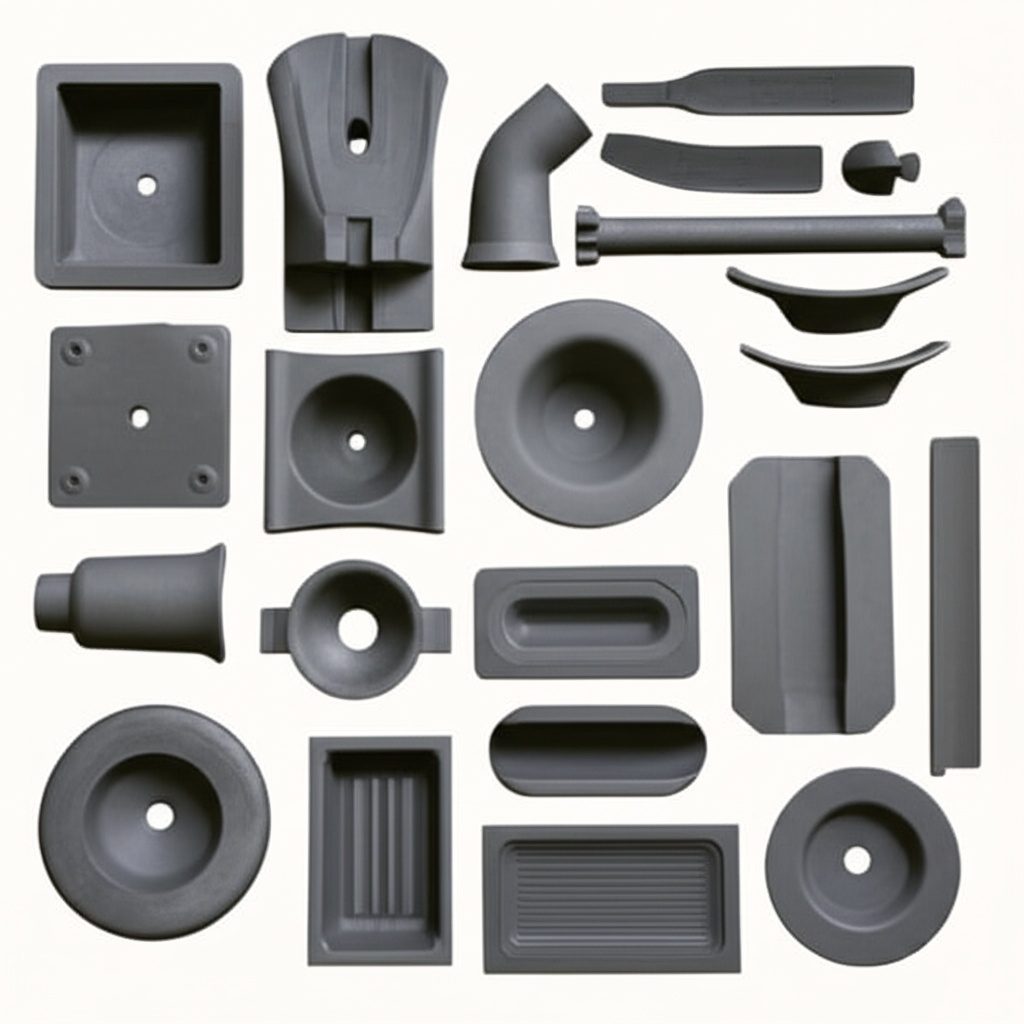Etapas de potencia de inversores de carburo de silicio para variadores de frecuencia, inversores solares y sistemas de almacenamiento de energía

Compartir
Visión general del producto y relevancia para el mercado en 2025
Las etapas de potencia del inversor de carburo de silicio (SiC) son conjuntos diseñados específicamente que integran módulos MOSFET de SiC, controladores de compuerta, condensadores de enlace de CC, detección de corriente/tensión y gestión térmica para convertir CC a CA con alta eficiencia y alta frecuencia de conmutación. Para los sectores textil, cementero siderúrgico, y de energía limpia en rápido crecimiento de Pakistán, estas etapas desbloquean variadores de frecuencia variable (VFD) compactos y de bajas pérdidas, inversores solares conectados a la red y sistemas bidireccionales de almacenamiento de energía de batería (BESS).
Por qué es importante en 2025:
- Variabilidad de la red: Las caídas, subidas y armónicos frecuentes estresan a los inversores IGBT de silicio convencionales. SiC ofrece un mayor control dv/dt, una respuesta más rápida y menos calor en las mismas condiciones.
- Alta temperatura ambiente/polvo: Las salas industriales que alcanzan los 40–45 °C y los entornos polvorientos (cemento, textil) exigen márgenes térmicos robustos y diseños sellados y compactos, puntos fuertes de SiC.
- Eficiencia y OPEX: Las tarifas de electricidad y los costes de respaldo de diésel están aumentando. El aumento de la eficiencia del sistema del 5–8 % de SiC reduce tanto el gasto energético como la carga de refrigeración.
- Limitaciones de espacio: Las salas de MCC y los pasillos de SAI/inversores tienen limitaciones de espacio. La densidad de potencia de SiC de >10 kW/L permite instalaciones más densas y adaptaciones de brownfield.
- Transición energética: Las microrredes solares e híbridas de Pakistán, además de los centros de datos y los BESS industriales, se benefician de las etapas bidireccionales de SiC de alta frecuencia que mejoran la eficiencia de ida y vuelta y el cumplimiento de la red.
Sicarb Tech diseña y personaliza las etapas de potencia del inversor de SiC para las realidades operativas locales: sistemas de 220/400 V, 50 Hz, largos recorridos de cables de motor, interacciones con transformadores y cumplimiento de las prácticas PEC y las expectativas de calidad del Código de Red NTDC.

Especificaciones técnicas y funciones avanzadas
Especificaciones representativas (personalizables por proyecto):
- Clases de tensión: módulos MOSFET de SiC de 650 V, 1200 V, 1700 V
- Potencias: 5 kW a 500 kW por chasis de inversor; paralelizable para mayor potencia
- Frecuencia de conmutación: hasta 100 kHz (típico de 16–60 kHz optimizado para aplicaciones para VFD; 40–80 kHz para PV/BESS)
- Eficiencia: etapa del inversor pico >98 %; ponderado EU/CEC >97 % (PV); eficiencia del VFD típica del 97–98 %
- Temperatura de la unión: Tj,max 175 °C (seleccionar dispositivos hasta 200 °C)
- Topologías: 2 niveles, 3 niveles NPC/TNPC/ANPC; bidireccional para BESS (modos buck/boost e inversor)
- Accionamiento de compuerta: ±15–18 V, protección DESAT, desconexión suave, pinza Miller, CMTI >100 V/ns
- Enlace de CC: condensadores de película de bajo ESL; barras colectoras segmentadas para minimizar la inductancia del bucle
- Detección: detección de corriente de derivación o Hall, divisores de tensión de precisión, supervisión de temperatura/aislamiento
- Térmico: refrigerado por aire o por líquido; DBC de AlN/Si3N4; disipadores de calor SSiC/RBSiC opcionales
- Protección: OCP/Ovp/Uvp, resistencia a cortocircuitos (tSC),
- Inter
- Objetivos de cumplimiento: IEC 61800 (VFD), IEC 62109 (inversores fotovoltaicos), IEC 62933/IEC 62477-1 (BESS/convertidores), IEC 61000 EMC; alineado con las prácticas de seguridad PEC y el Código de Red NTDC
Características avanzadas de Sicarb Tech:
- Enlace CC laminado para lograr una inductancia parásita ultrabaja para una conmutación limpia y de bajo sobreimpulso
- Suite de controladores de puerta probada en campo con dv/dt parametrizable para aislamiento de motor heredado
- Construcciones con revestimiento conforme, resistentes al polvo y opciones de envolventes de presión positiva para plantas de cemento/textiles
- Diagnóstico digital: margen SOA, contadores de vida útil para condensadores/ventiladores, telemetría lista para la nube
Funcionamiento de alta eficiencia en condiciones adversas
| Rendimiento de etapa de inversor de alta densidad para las industrias de Pakistán | Etapa de potencia del inversor SiC | Etapa de inversor IGBT de silicio |
|---|---|---|
| Eficiencia pico/ponderada | >98% / >97% | 94–96% / 92–94% |
| Capacidad de frecuencia de conmutación | Hasta 100 kHz | 10–20 kHz |
| Rendimiento térmico a 45 °C ambiente | Mínima reducción de potencia | Desclasificación significativa |
| Fidelidad del control del motor (VFD) | Ancho de banda alto, par preciso | Ancho de banda inferior |
| Rendimiento de ida y vuelta PV/BESS | Mayor debido a la baja pérdida de conmutación | Menor debido a mayores pérdidas |
| Huella y refrigeración del armario | 30–35% más pequeño | Disipadores/ventiladores más grandes |
Ventajas clave y beneficios probados
- Ahorro de eficiencia y OPEX: ahorro de energía del 5–8% frente a los inversores de silicio; HVAC reducido mediante un menor rechazo de calor.
- Huella compacta: la densidad >10 kW/L libera espacio en la sala MCC/UPS; mejor uso de tejados/contenedores para PV/BESS.
- Fiabilidad mejorada: funcionamiento a alta Tj, menor estrés de ciclo térmico, funcionamiento robusto en caso de perturbaciones en el alimentador.
- Control superior: la mayor frecuencia de conmutación permite formas de onda de corriente más limpias, menor ondulación de par y mejor cumplimiento de la red.
- THD reducido: cuando se utiliza con SiC PFC o filtros apropiados, admite THD <3% en las etapas de entrada y baja distorsión de salida para los motores.
Cita de un experto:
“Los inversores SiC combinan una baja pérdida de conmutación con capacidad de alta temperatura, lo que permite una magnetización más pequeña y un mayor ancho de banda de control, clave para los accionamientos de alta eficiencia y los sistemas interactivos con la red”. — Prof. Johann W. Kolar, ETH Zurich, Laboratorio de Sistemas de Electrónica de Potencia (conversaciones y publicaciones de la industria)
Aplicaciones reales e historias de éxito mensurables
- Modernización de VFD textil, Faisalabad:
- Se sustituyeron las etapas de inversor basadas en IGBT en los bastidores de hilado por etapas SiC (20–45 kW).
- Resultados: reducción de energía del 5,5%, temperatura del armario un 18% más baja, un 20% menos de disparos por caída de tensión; calidad del hilo mejorada debido a un control de velocidad más estricto.
- Ventiladores de precalentador/ID de cemento, Punjab:
- Inversor ANPC de 3 niveles SiC de 1200 V y 200 kW con construcción resistente al polvo.
- Resultados: reducción del 7% en la potencia del ventilador, intervalos de mantenimiento del filtro extendidos; THD en el suministro reducido por debajo del 3% con PFC de front-end coordinado.
- Microrred solar + BESS, polígono industrial de Sindh:
- Inversores fotovoltaicos de 500 kW con etapas SiC; convertidores bidireccionales BESS de 1 MW/2 MWh.
- Rendimiento: eficiencia ponderada fotovoltaica del 97,6%, mejora de ida y vuelta BESS +2,1% frente a la línea de base de silicio; tiempo de funcionamiento del diésel reducido en un 15% durante las horas pico.
【Indicación de imagen: descripción técnica detallada】 Gráfico de escena dividida: 1) VFD SiC que acciona un motor de inducción con superposición FFT que muestra una baja ondulación de par; 2) Matriz fotovoltaica en el tejado que alimenta un inversor conectado a la red SiC con curva de eficiencia; 3) BESS en contenedor con etapa bidireccional SiC y gráfico de eficiencia de ida y vuelta; añadir etiquetas para la frecuencia de conmutación, Tj y densidad de potencia; fotorrealista, 4K.
Selección y mantenimiento
- Margen de tensión/corriente:
- Especifique un margen eléctrico del 20–30% para caídas/aumentos de tensión y sobrecargas; valide el aislamiento del motor contra dv/dt a la frecuencia de conmutación elegida.
- Enfriamiento:
- Modele las trayectorias térmicas a 40–45 °C ambiente; considere la refrigeración líquida para bastidores de >250 kW o sitios de gran altitud con densidad de aire reducida.
- EMC y cableado:
- Utilice barras colectoras laminadas, bucles de CC cortos y blindaje adecuado; los cables de motor largos pueden requerir filtros dV/dt o seno según IEC 61800-3.
- Coordinación de protección:
- Establezca umbrales DESAT, temporización de apagado suave y OCP rápido; coordine con los disyuntores/relés aguas arriba para evitar disparos molestos.
- Mantenimiento:
- Tendencia de las temperaturas NTC, RPM del ventilador y ESR del condensador; programe el servicio preventivo en función de los ciclos térmicos registrados y las horas de funcionamiento.
- Endurecimiento ambiental:
- Revestimiento conforme y envolventes de presión positiva en cemento/textil; conectores sellados y clasificaciones IP cuando corresponda.
Factores de éxito del sector y testimonios de clientes
- Factores de éxito:
- Perfil de carga preciso y estudios de armónicos; evaluación de transformadores y cables
- Pruebas piloto durante el verano pico para validar los márgenes térmicos y EMC
- Formación sobre diseño de alta frecuencia, puesta a tierra y mejores prácticas de mantenimiento
- Integración con SCADA del sitio para alarmas y análisis predictivos
- Testimonio (Jefe de Operaciones, auxiliar de laminación de acero de Karachi):
- “La etapa del inversor SiC mejoró la estabilidad del accionamiento y redujo los costes energéticos. Nuestros armarios funcionan más fríos y los intervalos de mantenimiento se han alargado notablemente”.
Futuras innovaciones y tendencias del mercado
- Perspectivas 2025–2027:
- Adopción más amplia de SiC de 1700 V para accionamientos multinivel de media tensión en cemento y acero
- Etapas de inversor inteligentes con gemelos digitales integrados, monitorización de condiciones y diagnósticos en la nube
- Disminución de costes a través de obleas SiC de 200 mm y montaje local, lo que mejora la disponibilidad en Pakistán
- Revestimientos y difusores de calor mejorados (SSiC/RBSiC) para entornos extremos de polvo/calor
Perspectiva de la industria:
“Los semiconductores de banda prohibida ancha se están generalizando para los inversores industriales y renovables, con claras ventajas de eficiencia y densidad que aceleran la adopción”. — IEEE Power Electronics Magazine, Market Watch 2024
Preguntas frecuentes y respuestas de expertos
- ¿Dañará una mayor frecuencia de conmutación el aislamiento del motor heredado?
- Ajustamos dv/dt a través de la resistencia de la puerta y añadimos filtros dV/dt o seno para motores más antiguos. Nuestros diseños cumplen con los límites de EMC y aislamiento del motor de la norma IEC 61800-3.
- ¿Pueden los inversores SiC manejar los alimentadores de 220/400 V de Pakistán y las protecciones alineadas con PEC?
- Sí. Diseñamos para tensiones locales y coordinamos la protección con los disyuntores/relés del sitio, alineándonos con las expectativas de calidad del Código de Red NTDC.
- ¿Qué ganancias de eficiencia debemos esperar para PV/BESS?
- Las eficiencias ponderadas fotovoltaicas suelen superar el 97%; el rendimiento de ida y vuelta de BESS puede mejorar en ~2–3 puntos porcentuales en comparación con los sistemas basados en silicio.
- ¿Cuál es el ROI típico?
- 18–30 meses dependiendo del ciclo de trabajo, las tarifas y las reducciones de refrigeración; más rápido en líneas de cemento 24/7 y despliegues de centros de datos/BESS.
- ¿Cómo garantiza la fiabilidad en entornos polvorientos a 45 °C?
- Dispositivos SiC de alta Tj, diseño térmico robusto, revestimiento conforme y envolventes de presión positiva; diagnósticos continuos para prevenir fallos.
Por qué esta solución es adecuada para sus operaciones
Las etapas de potencia del inversor SiC ofrecen la eficiencia, la precisión de control y la resistencia térmica que las industrias de Pakistán necesitan. Ya sea modernizando VFD, escalando la generación solar u optimizando BESS, SiC reduce los costes de energía y refrigeración, mejora el tiempo de actividad en condiciones de red inestables y respalda el cumplimiento de las normas IEC y locales, lo que impulsa un valor de ciclo de vida medible.
Conecte con especialistas para soluciones personalizadas
Contrate a Sicarb Tech para acelerar su hoja de ruta de inversores:
- Más de 10 años de experiencia en fabricación de SiC con el respaldo de la Academia de Ciencias de China
- Desarrollo de productos personalizados que aprovechan los materiales R-SiC, SSiC, RBSiC, SiSiC y el embalaje de módulos avanzado
- Servicios de transferencia de tecnología y establecimiento de fábricas, desde estudios de viabilidad hasta la puesta en marcha de líneas de producción
- Soluciones llave en mano desde el procesamiento de materiales hasta las etapas de inversor terminadas, incluida la ingeniería de aplicaciones y el soporte de cumplimiento
- Resultados probados con más de 19 empresas en entornos exigentes; creación rápida de prototipos y despliegues piloto
Reserve una consulta gratuita para una evaluación del rendimiento y el ROI específica del sitio.
- Email: [email protected]
- Teléfono/WhatsApp: +86 133 6536 0038
Reserve ahora las franjas de ingeniería del cuarto trimestre de 2025 para asegurar los plazos de entrega y las ventanas de despliegue para la temporada alta.
Metadatos del artículo
- Última actualización: 2025-09-11
- Próxima revisión programada: 2025-12-15
- Autor: Equipo de ingeniería de aplicaciones de Sicarb Tech
- Contact: [email protected] | +86 133 6536 0038
- Enfoque en las normas: IEC 61800, IEC 62109, IEC 62477-1, IEC 61000; alineado con las prácticas PEC y los criterios de calidad del Código de Red NTDC

About the Author: Sicarb Tech
We provide clear and reliable insights into silicon carbide materials, component manufacturing, application technologies, and global market trends. Our content reflects industry expertise, practical experience, and a commitment to helping readers understand the evolving SiC landscape.




